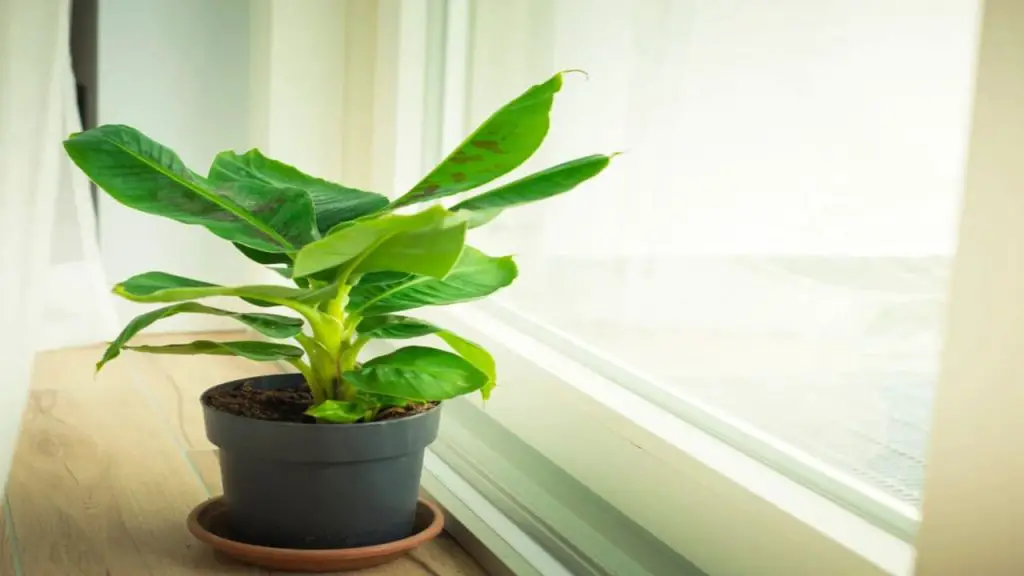Banana plants, also known as Musa plants, are herbaceous perennials that belong to the family Musaceae. They are native to tropical regions of Southeast Asia but are now cultivated all over the world for their fruit and ornamental value.
Banana plants are characterized by their large, elongated leaves that can grow up to 9 feet long and 2 feet wide. They can also produce bunches of sweet, edible fruit that come in a variety of sizes and colors, depending on the species.
Apart from their delicious fruit, banana plants are also highly valued for their exotic and alluring appearance, which renders them a sought-after option for gardening enthusiasts, be it for indoor or outdoor spaces.
In this article, we’ll explore the proper techniques for caring for banana plants. Additionally, we will examine the various advantages of providing adequate care for your banana plant, as well as the methods for propagating banana plants.
First, let’s take a closer look at the Benefits of taking care of banana trees

1. Benefits of taking care of banana plant
Caring for a banana plant can bring many benefits, both practical and aesthetic. For starters, a healthy and productive banana plant can provide you with a steady supply of delicious fruit that is rich in vitamins and minerals, such as potassium, vitamin C, and vitamin B6.
Additionally, banana plants can serve as natural air purifiers, as they are known to absorb harmful pollutants and release oxygen. Growing a banana plant can also add a touch of tropical beauty to your home or garden, with its large, lush leaves and vibrant fruit.
Taking care of a banana plant can also be a rewarding hobby that helps to reduce stress and improve your overall well-being. By providing your banana plant with the proper care and attention, you can reap these benefits and more, making it a worthwhile investment of your time and effort.
2. Growing and Caring for Banana plant
Now we will be discussing the cultivation and maintenance of banana trees
2.1 Location
Choose a location for your banana plant that receives plenty of sunlight and is protected from strong winds.
Banana plants prefer warm, humid environments and can tolerate some shade, but they require at least 6-8 hours of direct sunlight per day to thrive.
2.2 Soil
Banana plants require well-draining soil that is rich in organic matter and nutrients. Ideally, the soil should have a pH level between 5.5 and 7.0.
If your soil is too heavy or compacted, consider amending it with compost or other organic matter to improve its structure and fertility.
2.3 Watering
Watering your banana plant, there are a few things to keep in mind the frequency of watering may vary depending on factors such as temperature, humidity, and soil type. In general, during hot, dry weather, banana plants may require more frequent watering to prevent the soil from drying out.
Conversely, during cooler, wetter weather, they may require less frequent watering to avoid overwatering and waterlogging the soil.
To water your banana plant, use a watering can or hose to apply water directly to the soil around the base of the plant. Avoid watering the leaves or stem of the plant, as this can increase the risk of fungal growth and other diseases.
Instead, focus on saturating the soil around the plant’s roots, making sure to water deeply enough to reach the plant’s entire root system.
To check if your banana plant needs watering, stick your finger into the soil around the plant’s base. If the soil feels dry to the touch, it’s time to water. If the soil feels moist, you can wait a day or two before checking again.
2.4 Fertilization
Fertilizing is an important step in caring for your banana plant, as it helps to provide the nutrients needed for healthy growth and fruit production. When choosing a fertilizer, look for a balanced one that contains equal amounts of nitrogen, phosphorus, and potassium. This will provide your banana plant with a well-rounded mix of essential nutrients.
To apply the fertilizer, follow the package instructions for dosage and application. It’s generally recommended to apply fertilizer every 4-6 weeks during the growing season, which typically lasts from spring to fall. Avoid applying too much fertilizer, as this can lead to salt buildup in the soil and damage to your plant.
When applying the fertilizer, spread it evenly around the base of the plant, being careful not to get it on the leaves or stem. You can also work the fertilizer into the soil lightly with a rake or cultivator.
After applying the fertilizer, water the plant thoroughly to help distribute the nutrients throughout the soil.
Providing your banana plant with regular fertilization is crucial to maintaining its health and productivity, resulting in an abundance of delectable fruit that you can relish.
2.5 Pruning
Regular pruning helps to remove any dead or damaged leaves, as well as excess shoots or suckers that grow from the base of the plant. This helps to direct the plant’s energy towards producing fruit, rather than putting energy into non-essential growth.
When pruning your banana plant, start by removing any dead or damaged leaves. These can be easily identified by their brown or yellow colour and can be removed by gently pulling them away from the plant. This will help to keep the plant looking tidy and prevent any disease or pests from spreading.
Next, look for excess shoots or suckers that grow from the base of the plant. These can be removed by using sharp, clean pruning shears to cut them off at the base.
It’s important to remove these suckers as they can compete with the main plant for nutrients and water, leading to reduced fruit production.
Promoting healthy growth and fruit production, pruning can also help to manage the size of your banana plant. If your plant is becoming too large for your space, you can remove older leaves or cut the plant back to a smaller size.
2.6 Pest and disease control
Like all plants, banana plants are prone to pests and diseases that can damage or even kill the plant if left untreated. Some of the most common pests that affect banana plants include mites, aphids, and mealybugs, while diseases such as Panama disease and black Sigatoka can also pose a threat.
It’s important to regularly inspect it for any signs of damage or disease. Look for yellow or discoloured leaves, wilting or drooping stems, or any unusual growths or spots on the leaves or stem. These could be indications of a pest or disease problem.
If you do identify a pest or disease issue, Then address it promptly to prevent it from spreading to other plants or causing more damage. You can use organic controls such as neem oil or insecticidal soap to treat insect infestations, or chemical controls if necessary.
Always follow the instructions on the label carefully and wear protective gear when handling any chemical treatments. Prevention is also key to maintaining a healthy banana plant.
Ensure that your plant is planted in well-draining soil and receives proper watering and fertilization, as stressed plants are more susceptible to disease and pest problems.
Regularly remove any dead or decaying plant material and maintain good garden hygiene to reduce the risk of fungal infections.
By staying vigilant and taking proactive steps to prevent and treat pest and disease issues, you can help ensure that your banana plant remains healthy and productive for years to come.
3. How to Propagate Banana plant
There are two common ways to propagate a banana plant: through division or through pups.
3.1 Division
When the banana plant grows large, it will produce multiple stems or pseudostems. To propagate through division, you can carefully separate the new pseudostems from the parent plant using a sharp, clean knife or pruning shears. Each division should have its own set of roots. Replant each division in a new pot or in the ground.
3.2 Pups
Pups are small banana plants that grow from the parent plant’s rhizomes or underground stems. To propagate through pups, wait for them to grow to about 6 inches tall before separating them from the parent plant.
Use a sharp, clean knife to cut the pup away from the parent plant, making sure to include some of the rhizomes. Replant the pup in a new pot or in the ground.
Conclusion
In this article, we have discussed the topic of growing and maintaining banana plants, including the benefits of taking care of banana plants, and how to propagate these plants.
We hope that the information we provided has been helpful to you. Thank you for the time to read our article.
FAQ
How to care for the banana plant in winter
To care for a banana plant in winter, you should protect it from frost by covering it with a blanket, burlap, or frost cloth. You can also use a space heater or heat lamp to keep it warm.
Water the plant once a week or when the soil is dry to the touch, and fertilize sparingly about once a month or stop fertilizing altogether.
Make sure it gets at least six hours of direct sunlight every day, and if you live in an area with shorter daylight hours, consider moving it to a sunnier location or using a grow light.
Maintain humidity around the plant by using a humidifier if your indoor air is dry. Prune any dead or damaged leaves to keep the plant healthy, even if it doesn’t grow as much during winter.



